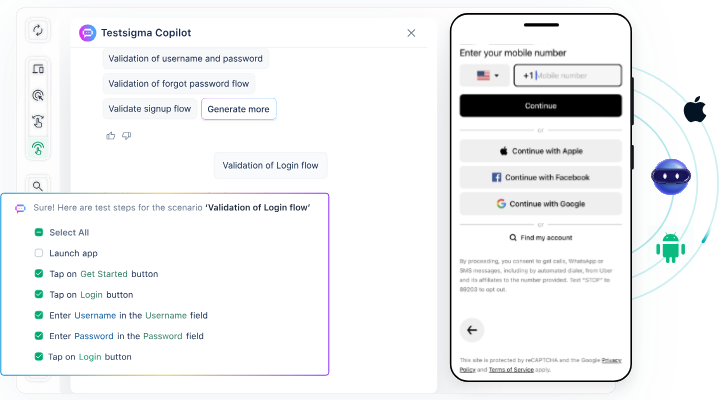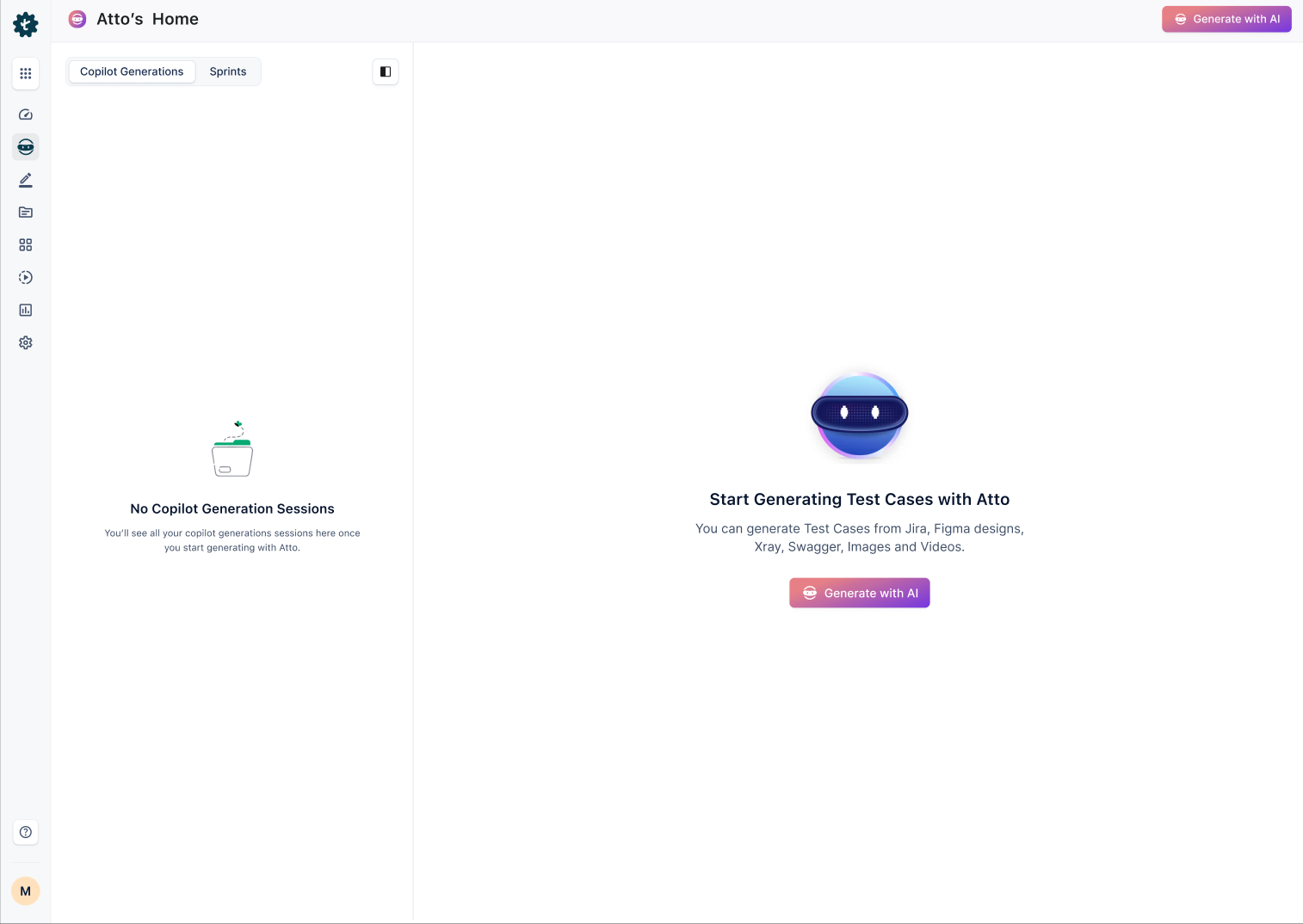Table Of Contents
Overview
Top Mobile Testing Strategies
- Know your users and devices by defining the right device matrix.
- Include multiple test types such as functional, usability, performance, compatibility, and accessibility testing.
- Set clear boundaries for test coverage to avoid duplication and focus on critical areas.
- Test on real devices instead of relying only on simulators or emulators.
- Automate stable and repetitive test cases while keeping manual efforts for exploratory testing.
- Adopt continuous testing early in the development cycle.
- Track metrics like test coverage, defect density, and crash rates to improve future releases.
How Testsigma Helps in Mobile Testing Strategy
- Create automated test cases without coding using NLP or AI-generated scripts.
- Test across 3000+ real Android and iOS devices on the cloud.
- Reduce maintenance with AI-driven self-healing capabilities.
- Speed up releases with parallel execution and CI/CD integrations.
- Access centralized dashboards and reports for complete visibility and collaboration.
Mobile apps are no longer a nice-to-have, they’re how businesses operate and engage users. But building a great app isn’t just about writing code. It’s about making sure the app works smoothly across different devices, screen sizes, operating systems, and network conditions. If you’re a tester, you already know that mobile testing brings unique challenges. Creating a mobile testing strategy that works in the real world, under tight deadlines and device chaos, is the key to delivering quality apps consistently.
Here’s how to build a practical, effective mobile app testing strategy that actually works in everyday testing environments.
Top 7 Mobile Testing Strategies
Here are a few of the most practical strategies to optimize your mobile testing process:
1. Understand Your Users and Devices
Start by identifying your target audience, devices, and platforms. What devices are they using? Are they on Android or iOS? Knowing this helps you define the right device matrix for your mobile test strategy and prioritize test coverage effectively.
2. Choose the Right Types of Mobile Testing
A strong mobile application testing strategy should include functional testing, usability testing, and real-world checks like mobile compatibility testing, mobile accessibility testing, and mobile app performance testing. Each test type serves a different purpose but contributes equally to overall quality.
3. Define Test Coverage Scope
Set clear boundaries on what needs to be tested. Should you test UI flows, offline behavior, API integrations, or background activity? Mapping these out avoids duplication and helps focus efforts where they matter most.
4. Use Real Devices to Test
Testing only on simulators or emulators isn’t enough. Rely on testing with real devices for accurate results. Testing on real devices helps understand your app’s complexity and what challenges your users might actually face.
5. Utilize Automation
It is not the best use of resources when testers spend their time and effort on manually testing stable and repetitive test cases. Automate these tasks and speed up regression testing. Divert manual testing efforts to more business-oriented, strategic testing. While automating, choose mobile testing tools that support cross-platform execution and integrate with your CI/CD pipeline.

6. Incorporate Continuous Testing Early
Adopt the shift left approach. Don’t wait until the end of development. Run tests alongside development builds to catch bugs early, saving time and resources in the long run.
7. Track Metrics and Improve
Monitor key testing metrics like test coverage, defect density, crash rates, and time-to-release. Use these insights to fine-tune your mobile app testing strategy over time and improve future releases.
Streamline Your Mobile Testing Strategy with Testsigma
Testsigma is a codeless, Agentic AI-powered automated mobile test automation platform that makes it easy to build, run, and manage mobile tests efficiently. A strong mobile test strategy needs a smart, scalable tool, and that’s where Testsigma comes in.

With Testsigma, You Can:
- Automate mobile app testing for frameworks like Flutter, React Native, and more.
- Run tests across 3000+ real devices on the cloud for reliable cross-platform coverage.
- Create tests without coding using NLP-based test creation in plain English or automatic test generation features powered by Agentic AI.
- Leverage Agentic AI-powered Autonomous Testing with Atto, your AI coworker for test generation, execution, maintenance, and analysis.
- Reduce test maintenance by up to 90% with self-healing capabilities that adapt to UI changes automatically.
- Speed up releases with parallel testing and built-in CI/CD and DevOps integrations.
- Access detailed reports and metrics to continuously improve your mobile app testing strategy.
- Manage all your test cases, data, and suites from a centralized dashboard for better team collaboration.
Conclusion
A solid mobile testing strategy is all about knowing your users, picking the right devices and tools, and testing continuously and thoughtfully. With the right approach, you can reduce bugs, improve performance, and launch faster without compromising quality. Keep refining your mobile test strategy to stay ahead in the fast-changing mobile landscape.


